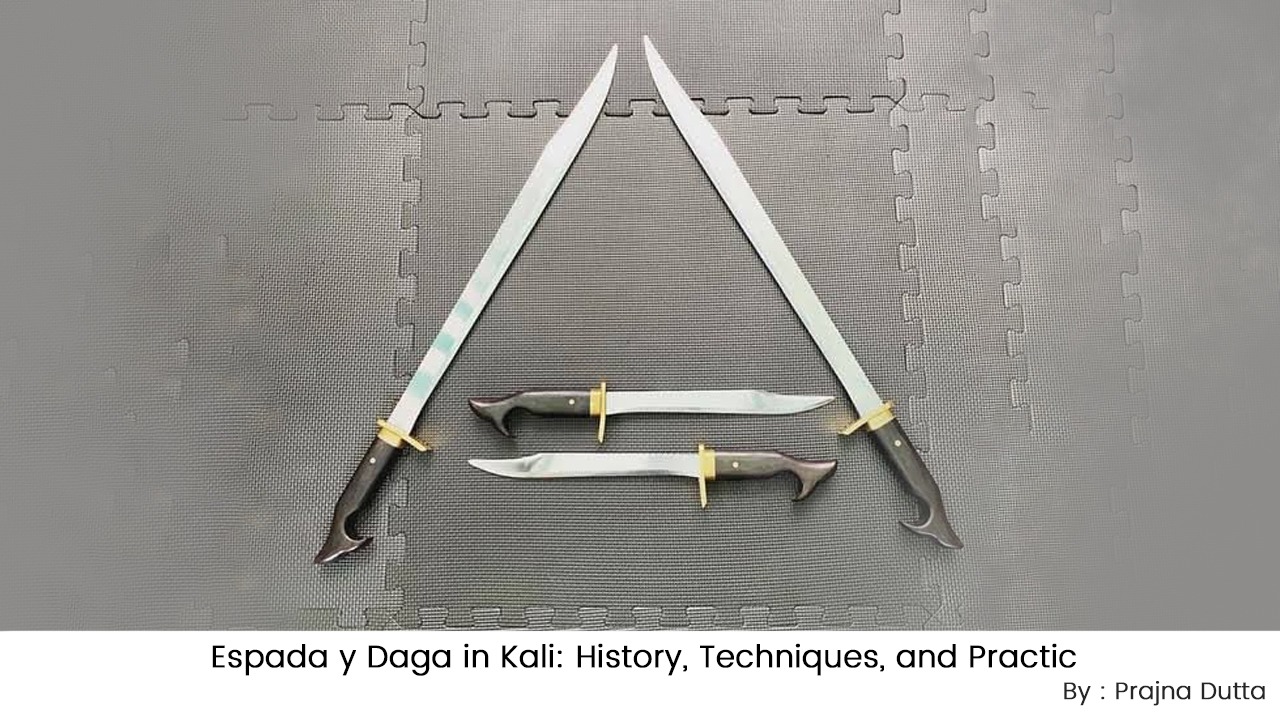Introduction
Espada y daga, which translates to sword and dagger in Spanish, is a Filipino martial arts fighting style that is prominently associated with Kali, also known as Arnis or Eskrima. This intricate and dynamic combat system has a rich history and serves as a testament to the Filipino people's ingenuity and resilience. The practice of Espada y daga is characterized by the combination of a longer weapon, typically a sword, with a shorter weapon, often a dagger or knife. This article aims to explore the history, techniques, and practice of Espada y daga in the context of Kali.
History of Kali and Espada y Daga
Kali, Arnis, and Eskrima are umbrella terms that encompass a diverse range of traditional Filipino martial arts. These arts have been passed down through generations and were historically developed as a means of self-defense and warfare. The origins of Kali can be traced back to the pre-colonial era in the Philippines, where indigenous fighting systems were refined and adapted to combat foreign invaders.
The Spanish colonization of the Philippines from the 16th to 19th centuries significantly influenced the development of Kali and the integration of Espada y daga techniques. During this period, the Filipinos were subjected to colonial rule and restrictions on the use of traditional weapons. As a result, practitioners of Kali adapted their techniques to incorporate everyday objects such as the bolo (machete) and the punyal (dagger) as a means of preserving their combat skills. This adaptation gave rise to the art of Espada y daga, which emphasized the use of both long and short weapons in combination.
Techniques and Principles of Espada y Daga
Espada y daga techniques are characterized by their fluidity, precision, and adaptability. The art emphasizes efficient and simultaneous use of the sword and dagger, making it a formidable martial art in both armed and unarmed combat scenarios. The core principles of Espada y daga include coordination, timing, and the ability to seamlessly transition between offensive and defensive maneuvers.
One of the fundamental aspects of Espada y daga is the concept of "defanging the snake," which involves targeting an opponent's limbs to disarm them effectively. Practitioners are trained to strike with precision and speed, aiming to incapacitate an opponent's ability to wield a weapon. This principle is symbolic of the art's practical and strategic approach to combat, where the focus is on neutralizing threats swiftly and decisively.
Training and Practice
Training in Espada y daga involves a systematic and progressive approach to mastering the art's techniques. Practitioners typically begin with footwork, coordination drills, and solo forms to develop the fundamental skills necessary for wielding both the sword and dagger. As students progress, partner drills and sparring play a vital role in honing their ability to apply techniques in real-time combat scenarios.
In addition to weapon-based techniques, Espada y daga training often includes empty-hand combat, grappling, and disarming techniques. This holistic approach ensures that practitioners are well-rounded and capable of defending themselves in a variety of situations. Moreover, the emphasis on practical application and adaptability makes Espada y daga a valuable martial art for self-defense and personal protection.
The significance of Espada y daga in Kali extends beyond its practical combat applications. The art serves as a symbol of Filipino cultural heritage and identity, embodying the spirit of resilience and resourcefulness that has defined the Filipino people throughout history. As a result, the practice of Espada y daga has gained recognition and popularity not only within the Philippines but also internationally, attracting practitioners and enthusiasts from diverse backgrounds.
In recent years, the global interest in martial arts, particularly those with historical and cultural significance, has contributed to the resurgence of traditional Filipino martial arts such as Kali and the art of Espada y daga. This resurgence has led to a renewed appreciation for the depth and complexity of these fighting systems, as well as their practical relevance in contemporary self-defense and combat sports contexts.
Furthermore, the practice of Espada y daga has become an integral part of military and law enforcement training programs, both in the Philippines and abroad. The art's focus on adaptability, precision, and strategic thinking aligns with the principles of modern tactical combat and defensive tactics, making it a valuable asset for security and defense personnel.
In addition to its practical applications, Espada y daga has also found its way into popular culture, including films, literature, and media. Its dynamic and visually striking techniques have captured the imagination of audiences worldwide, further contributing to its recognition and appeal beyond the realm of martial arts enthusiasts.
As the practice of Espada y daga continues to evolve, contemporary practitioners and instructors are dedicated to preserving its traditional foundations while also adapting to the demands of the modern world. This balance between tradition and innovation ensures that the art remains relevant and accessible to new generations of martial artists while honoring its historical and cultural significance.
In conclusion, the history and practice of Espada y daga in Kali exemplify the enduring legacy of Filipino martial arts and their impact on global combat systems. From its origins in the struggle for survival and resistance to colonial rule to its continued relevance in contemporary martial arts and self-defense, Espada y daga stands as a testament to the ingenuity, adaptability, and resilience of the Filipino martial arts tradition. Whether as a practical combat system, a cultural heritage, or a source of inspiration in popular culture, Espada y daga continues to captivate and inspire martial artists and enthusiasts around the world, ensuring that its legacy endures for generations to come.

Comments